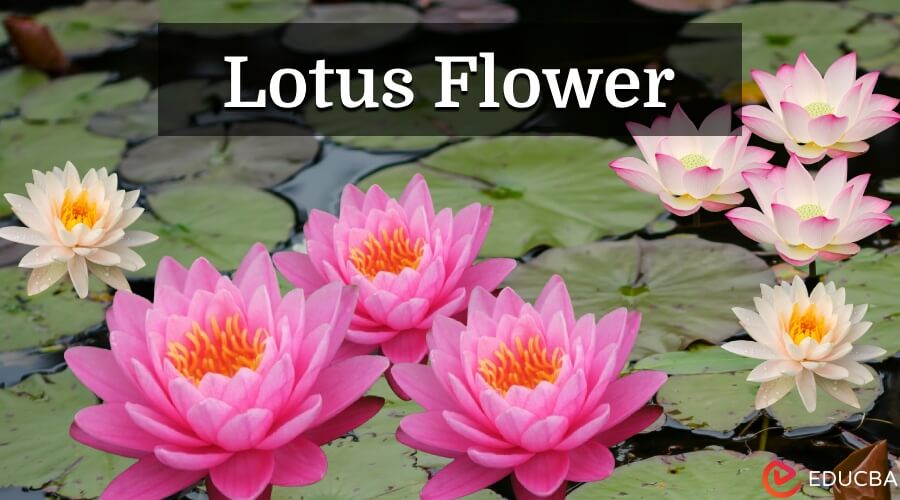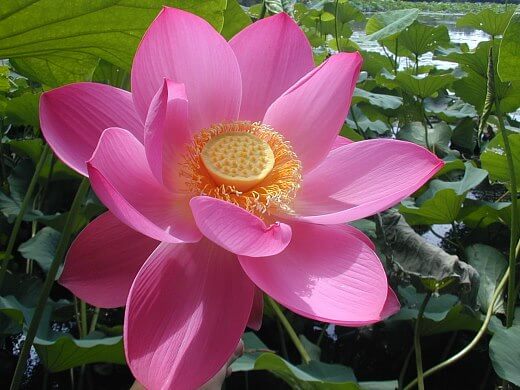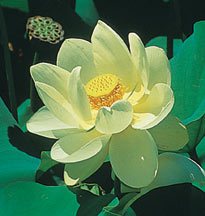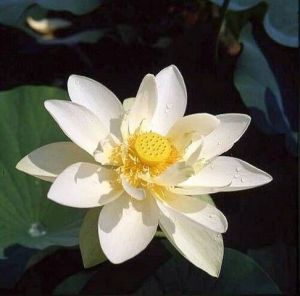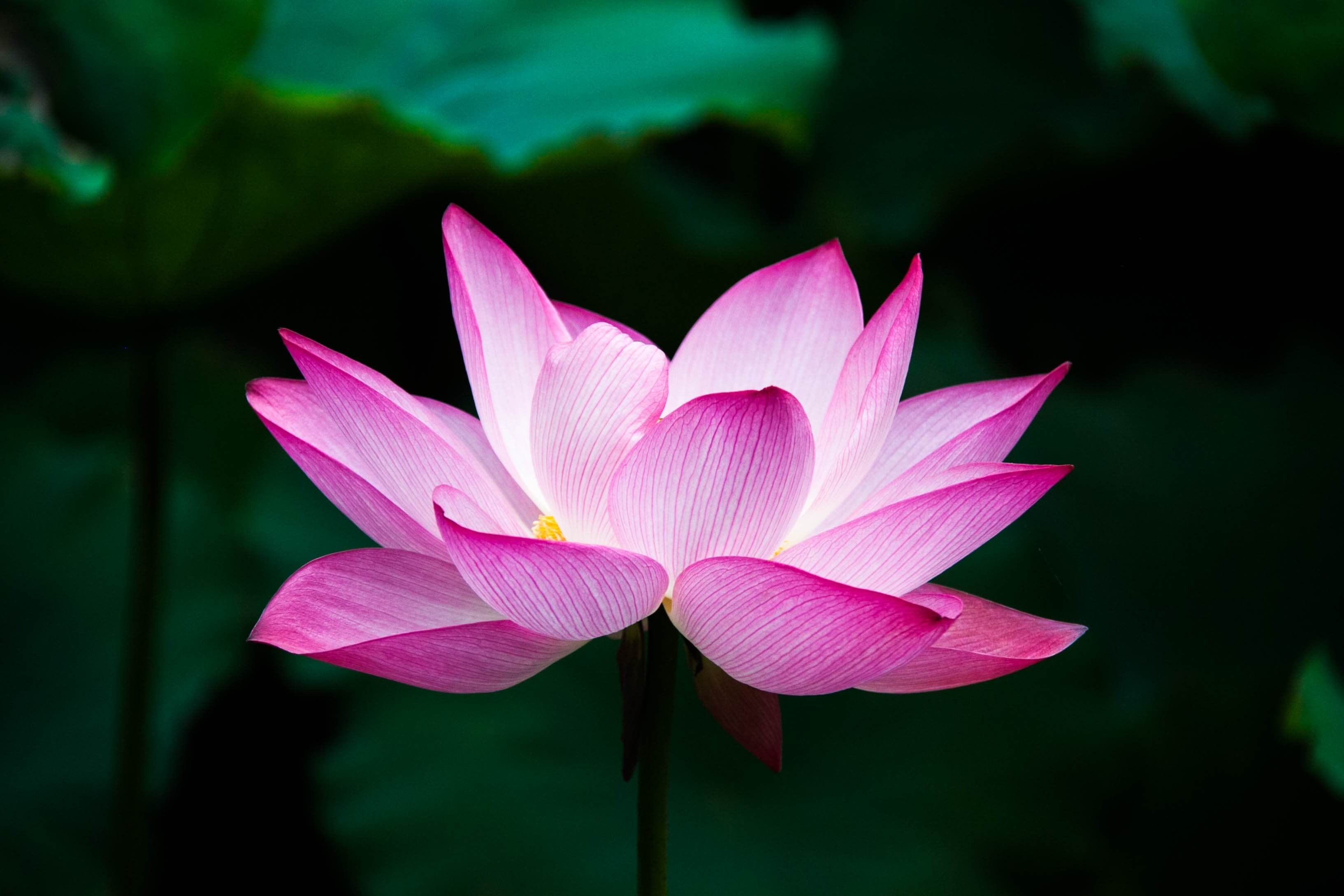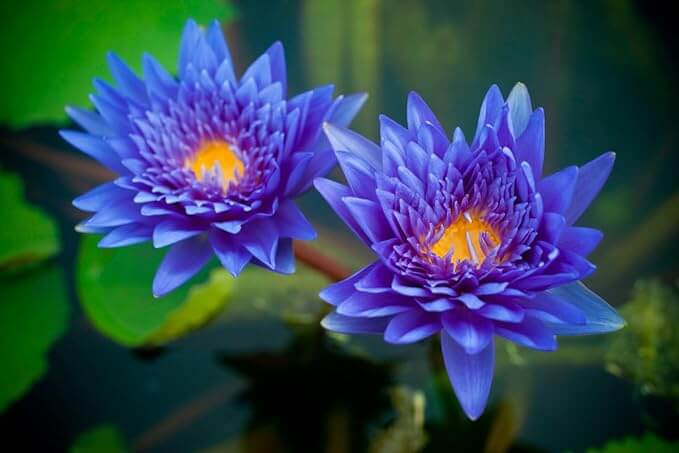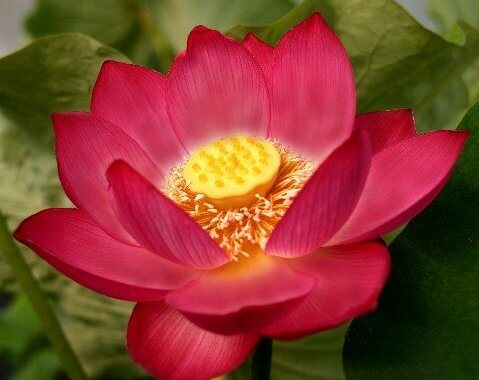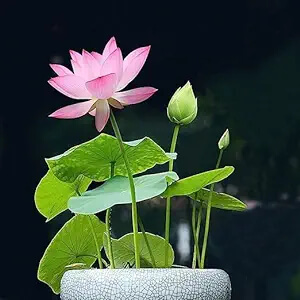Introduction
The lotus flower, revered for its exquisite beauty and profound symbolism, holds a special place in the hearts and minds of people across cultures and generations. The lotus symbolizes purity, resilience, and spiritual enlightenment, with its delicate petals emerging gracefully from murky waters. From ancient civilizations to modern societies, the lotus has captivated imaginations and inspired countless works of art, literature, and religious devotion. In this essay, we delve into the multifaceted significance of the lotus flower, exploring its botanical characteristics, cultural symbolism, and enduring relevance in today’s world.
Origin of Lotus
The origin of the lotus flower is a fascinating aspect of its botanical and cultural history. Here’s a breakdown of its origin:
- Geographical Distribution: Lotuses primarily thrive in Asia, Africa, and Australia, with most species concentrated in tropical and subtropical regions. They thrive in diverse habitats such as ponds, lakes, marshes, and slow-moving rivers.
- Evolutionary History: Lotuses belong to the family Nelumbonaceae and genus Nelumbo. Fossil records indicate that lotus plants have existed for millions of years, with some species dating back to the Cretaceous period. Their evolutionary adaptations have allowed them to survive and thrive in various ecological niches.
- Adaptation to Aquatic Environments: Lotuses possess unique adaptations that enable them to flourish in aquatic habitats. Indeed, lotus leaves possess a hydrophobic (water-repelling) waxy substance, which assists them in staying dry and buoyant on the water’s surface. Their roots anchor them firmly in the muddy substrate, enabling them to withstand fluctuating water levels.
- Propagation and Spread: Lotuses reproduce through seeds and rhizomes, with seeds germinating in the mud at the bottom of water bodies. They can also spread rapidly through vegetative propagation, forming dense colonies in favorable habitats.
- Cultural Exchange and Global Spread: Through trade, migration, and cultural exchange, the symbolism and cultivation of lotus flowers have spread to various parts of the world. Today, lotuses can be found in botanical gardens, parks, and private ponds worldwide, reminding them of their enduring beauty and cultural significance.
Characteristics of the Lotus
Here’s a table outlining the characteristics of the lotus flower:
| Characteristic | Description |
|
Botanical Family |
Nelumbonaceae |
|
Genus |
Nelumbo |
|
Type |
Aquatic perennial plant |
|
Leaves |
Large, round, floating on the water’s surface |
|
Flowers |
Showy, with numerous petals arranged in layers |
|
Color |
Typically pink or white, though colors can vary |
|
Habitat |
Ponds, lakes, marshes, slow-moving rivers |
|
Symbolism |
Purity, enlightenment, rebirth, spiritual growth |
|
Reproduction |
Through seeds and rhizomes, capable of rapid vegetative propagation |
| Adaptations |
The waxy coating on leaves repels water; roots anchor firmly in a muddy substrate. |
Lotus, the National Flower
The lotus flower holds the esteemed position of being the national flower in two countries due to its profound cultural significance and intrinsic beauty.
- India: The lotus (Nelumbo nucifera) is the national flower. In Indian mythology, the lotus holds deep cultural and religious significance, revered for its purity, beauty, and spiritual symbolism. The lotus is widely depicted in Indian art, literature, and religious iconography, making it an integral part of the country’s cultural heritage.
- Vietnam: The lotus symbolizes purity, enlightenment, and renewal in Vietnam and is the national flower. Despite growing in muddy waters, the lotus emerges unstained, representing the resilience and strength of the Vietnamese people. The lotus is special in Vietnamese culture and is celebrated in art, literature, and religious rituals.
Types of Lotus
Here’s a brief explanation of the different types of lotus:
- Nelumbo nucifera (Sacred Lotus): Revered in Asian cultures for its spiritual symbolism, the Sacred Lotus is renowned for its large, showy flowers and round leaves. It thrives in shallow, muddy waters and comes in various colors, including pink, white, and yellow. Its seeds and rhizomes possess medicinal properties and find use in traditional medicine.
- Nelumbo lutea (American Lotus): Native to North America, the American Lotus features smaller flowers than its Asian counterpart. It grows in freshwater habitats like ponds and lakes, with leaves reaching up to two feet in diameter. The flowers are typically yellow or pale pink, and the plant provides habitat and food for various aquatic species.
- Nelumbo nucifera var. ‘alba’ (White Lotus): Characterized by its pure white flowers, this variety of the Sacred Lotus symbolizes purity and spiritual enlightenment. It is often cultivated in gardens and ponds for ornamental purposes, adding a serene and elegant touch to water features.
- Nelumbo nucifera var. ‘rosea’ (Pink Lotus): The Pink Lotus is a variant of the Sacred Lotus, distinguished by its vibrant pink flowers. It holds cultural significance in many Asian countries and is associated with love, compassion, and devotion. Pink lotus flowers find common use in religious ceremonies and offerings.
- Nelumbo nucifera var. ‘kamalasana’ (Blue Lotus): Also known as the Blue Lotus or Egyptian Lotus, this variety has sky-blue or bluish-purple flowers and is native to Egypt and parts of Asia. Ancient cultures revered it for its psychoactive properties and often depicted the plant in Egyptian art and mythology.
- Nelumbo nucifera var. ‘rubra’ (Red Lotus): The Red Lotus is a variant of the Sacred Lotus characterized by its deep red flowers. It symbolizes passion, vitality, and transformation and is often associated with love and romance. Red lotus flowers are used in cultural ceremonies, weddings, and festivals to signify auspicious beginnings.
- Nelumbo nucifera var. ‘ocamponis’ (Dwarf Lotus): The Dwarf Lotus is a smaller variety of Nelumbo nucifera, suitable for smaller ponds and container gardens. It has compact growth habits and produces diminutive flowers and leaves compared to other lotus varieties, making it ideal for small-scale water features and indoor cultivation.
Symbolism in Different Cultures
Here’s a structured breakdown of the symbolism of the lotus flower in different cultures:
1. Ancient Egypt
- Symbol of Rebirth: In ancient Egyptian mythology, the lotus symbolized rebirth and creation. The ancient Egyptians revered the lotus as a symbol of the sun god Ra’s creation, believing that Ra emerged from a lotus rising from the primordial waters of Nun at the dawn of creation.
- Depicted in Art and Architecture: Lotuses frequently appeared in Egyptian art and architecture, decorating temples, tombs, and sacred objects. The Blue Lotus (Nymphaea caerulea) held particular significance, often depicted in funerary scenes and symbolizing resurrection and the afterlife.
2. Hinduism and Buddhism
- Symbol of Purity and Enlightenment: Within Hinduism and Buddhism, the lotus symbolizes purity of body, speech, and mind. It is often associated with deities and enlightened beings, symbolizing spiritual growth and enlightenment.
- Depiction in Religious Texts and Iconography: Various Hindu scriptures and Buddhist texts mention the lotus, describing it as emerging from the navel of deities or serving as a seat for divine figures. In Buddhist iconography, the lotus often supports images of Buddhas and Bodhisattvas, symbolizing their transcendence over worldly suffering.
3. Chinese Culture
- Symbol of Harmony and Rebirth: In Chinese culture, the lotus symbolizes purity, harmony, and renewal. It is associated with yin and yang, representing the balance between opposing forces.
- Presence in Art and Literature: Chinese art, poetry, and literature have celebrated lotuses for centuries. Artists depict lotuses in paintings, ceramics, and traditional ink-wash drawings, symbolizing beauty, resilience, and the unfolding of enlightenment.
4. Other Cultures
- Greek and Roman Mythology: The lotus was mentioned in Greek and Roman mythology, often associated with deities such as Aphrodite and Venus. It symbolized beauty, fertility, and divine grace.
- Native American Traditions: Some Native American cultures also ascribed symbolic meaning to the lotus, viewing it as a sacred plant with healing properties and spiritual significance.
Scientific and Medicinal Significance
The lotus flower (Nelumbo nucifera) holds scientific and medicinal significance, with various parts of the plant utilized for their therapeutic properties. Here’s an overview of its scientific and medicinal importance:
- Antioxidant Properties: Lotus flowers contain compounds such as flavonoids, alkaloids, and phenolic acids, which exhibit potent antioxidant properties. These antioxidants function by counteracting detrimental free radicals within the body, consequently diminishing oxidative stress and potentially mitigating the risk of chronic ailments such as cancer and cardiovascular disorders.
- Anti-inflammatory Effects: Extracts from lotus flowers and leaves have demonstrated anti-inflammatory effects in laboratory studies. When integrated into herbal remedies or topical treatments, these anti-inflammatory compounds might aid in alleviating symptoms of inflammatory conditions like arthritis, asthma, and skin disorders.
- Digestive Health: Lotus seeds, commonly known as “makhana” or “fox nuts,” are consumed as a nutritious snack in many cultures. Lotus seeds, abundant in dietary fiber, support digestive wellness by regulating bowel movements, averting constipation, and fostering a balanced gut microbiome.
- Stress Reduction and Relaxation: Infuse lotus petals into teas, tinctures, and aromatherapy products for their calming and stress-relieving properties. People believe that the floral scent of lotus has a soothing effect on the mind and body, promoting relaxation, reducing anxiety, and improving sleep quality.
- Skin Care: Skincare products commonly incorporate lotus extracts for their moisturizing, anti-aging, and skin-brightening properties. The vitamins, minerals, and antioxidants found in lotus contribute to skin nourishment, enhance elasticity, and diminish the visibility of wrinkles and blemishes.
- Traditional Medicine: In Ayurveda, Traditional Chinese Medicine (TCM), and Unani, practitioners employ diverse components of the lotus plant to address various health concerns. Lotus roots, seeds, leaves, and flowers are incorporated into herbal formulations to address diarrhea, fever, cough, urinary tract infections, and menstrual disorders.
- Cardiovascular Health: Researchers have investigated lotus leaf extracts for their potential cardiovascular benefits, including lowering cholesterol levels, reducing blood pressure, and improving blood circulation. By its beneficial effects on cardiovascular health, adding lotus to a well-rounded diet may reduce the likelihood of heart disease and stroke.
Cultural Practices and Rituals
Cultural practices and rituals involving the lotus flower are diverse and deeply ingrained in various societies worldwide. Here’s an exploration of some of these practices:
- Religious Ceremonies: Lotus flowers hold significant religious importance in many cultures. Lotuses often symbolize purity, enlightenment, and divine grace in religious ceremonies, rituals, and offerings. In Hinduism, for example, devotees offer lotus flowers to deities during worship ceremonies, while in Buddhism, practitioners use lotus petals as ritual adornments for altars and statues of the Buddha.
- Weddings and Celebrations: People commonly incorporate lotus flowers in weddings and other celebrations as symbols of beauty, purity, and new beginnings. In certain cultures, the exchange of lotus garlands or bouquets between the bride and groom symbolizes affection and wishes for prosperity. Additionally, lotus-themed decorations may adorn wedding venues to create an atmosphere of elegance and grace.
- Meditation and Yoga: In spiritual traditions like meditation and yoga, the lotus flower represents spiritual development, enlightenment, and inner harmony. Practitioners often visualize the lotus blossoming within themselves as they strive for self-awareness and transcendence. The lotus posture (Padmasana) in yoga is named after the flower, reflecting its association with tranquility and groundedness.
- Funeral Rites: Lotus flowers are significant in funeral rites and ceremonies in many cultures. They symbolize the cycle of life, death, rebirth, and the hope that the deceased’s soul will attain spiritual liberation. As a final farewell gesture, expressing reverence and honor for the departed, lotus petals may be scattered over funeral pyres or placed on caskets.
- Culinary Uses: Many cuisines value lotus seeds and roots as nutritious food sources. They feature in culinary preparations such as soups, stews, desserts, and herbal teas. Lotus seeds, also known as “makhana,” are particularly popular in Asian cuisine for their crunchy texture and subtle flavor.
Threats to Lotus Habitats
While exact statistics on the threats to lotus habitats may vary by region and species, several factors pose significant challenges to the conservation of lotus ecosystems worldwide. Here are some common threats:
- Habitat Loss and Degradation: Urbanization, agricultural expansion, and infrastructure development contribute to the loss and degradation of lotus habitats, including wetlands, ponds, and marshes. According to the Ramsar Convention on Wetlands, ongoing threats persist for remaining habitats, with approximately 87% of the world’s wetlands lost since 1700.
- Pollution: Water pollution from industrial runoff, agricultural pesticides, and untreated sewage threaten lotus habitats. Pollutants like heavy metals, nutrients, and toxic chemicals can degrade water quality, disrupt aquatic ecosystems, and harm lotus populations. According to the World Wildlife Fund (WWF), pollution affects over 80% of the world’s water bodies.
- Invasive Species: Invasive plants and animals have the potential to outcompete native lotus species for resources, disrupt ecosystem dynamics, and alter habitat structure. Lotus habitats face threats from invasive species like water hyacinth (Eichhornia crassipes) and common carp (Cyprinus carpio), which can outcompete native flora and fauna.
- Climate Change: Climate change exacerbates threats to lotus habitats through alterations in temperature, precipitation patterns, and sea levels. Climate changes, alterations in rainfall patterns, and extreme weather events can disturb lotus flowering and seed germination, influence pollinator populations, and contribute to habitat loss through rising sea levels and coastal erosion.
- Overharvesting and Illegal Trade: Overharvesting lotus plants for ornamental, medicinal, and culinary purposes can deplete wild populations and disrupt ecosystem functioning. Additionally, illegal trade in lotus seeds, rhizomes, and other plant parts contributes to habitat degradation and threatens the survival of wild lotus populations.
- Hydrological Alterations: Changes in hydrological regimes, including alterations in water flow, the construction of dams, and water extraction can have adverse effects on lotus habitats. Reduced water availability, altered sedimentation patterns, and changes in nutrient dynamics can affect lotus growth, reproduction, and overall ecosystem health.
Conservation Efforts
Conservation efforts to protect lotus habitats and promote the sustainable management of lotus ecosystems are crucial for safeguarding these iconic plants and the biodiversity they support. Here are some key conservation initiatives:
- Wetland Protection and Restoration: Protected areas like national parks, wildlife sanctuaries, and Ramsar sites can help preserve lotus habitats and encourage the sustainable management of wetland ecosystems. Restoration projects focused on restoring degraded wetlands and enhancing habitat quality for lotus and other aquatic species are also important.
- Pollution Control and Water Quality Management: Implementing measures to reduce pollution from industrial, agricultural, and urban sources is essential for maintaining water quality in lotus habitats. Efforts to regulate pollutant discharge, improve wastewater treatment infrastructure, and promote sustainable land-use practices can help mitigate the impacts of pollution on lotus ecosystems.
- Invasive Species Management: Controlling invasive plants and animals that threaten lotus habitats is crucial for maintaining ecosystem integrity and biodiversity. Strategies such as mechanical removal, biological control, and habitat restoration can help manage invasive species and reduce their negative impacts on lotus populations.
- Climate Change Adaptation: Implementing climate change adaptation measures to minimize the impacts of climate change on lotus habitats is essential for long-term survival. These measures may include habitat restoration, enhancing habitat connectivity, promoting ecosystem resilience, and reducing greenhouse gas emissions.
- Community Engagement and Education: Involving local communities, indigenous groups, and stakeholders in lotus conservation endeavors is crucial for ensuring conservation projects’ effectiveness and long-term sustainability. Community-based approaches that involve local knowledge, traditional practices, and cultural values can help foster stewardship of lotus habitats and promote conservation awareness.
- Research and Monitoring: Conducting scientific research better to understand lotus ecology, population dynamics, and threats is essential for informing conservation strategies and management decisions. Monitoring lotus populations, habitat conditions, and ecological indicators can help assess conservation effectiveness and guide adaptive management approaches.
- Policy and Legislation: Developing and implementing policies, laws, and regulations that support lotus conservation and sustainable management is critical for ensuring legal protection and enforcement of conservation measures. This may include designating protected areas, establishing conservation incentives, and integrating lotus conservation into national biodiversity strategies and action plans.
Conclusion
The lotus flower’s timeless allure transcends borders and cultures, symbolizing purity, resilience, and spiritual enlightenment. From ancient civilizations to modern societies, its delicate petals and profound symbolism have captivated hearts and inspired countless works of art, literature, and religious devotion. As a symbol of beauty and spiritual awakening, the lotus enriches our lives and connects us to the natural world. Through conservation efforts and cultural appreciation, we can ensure the preservation of lotus habitats and celebrate the enduring legacy of this extraordinary flower for generations to come.
